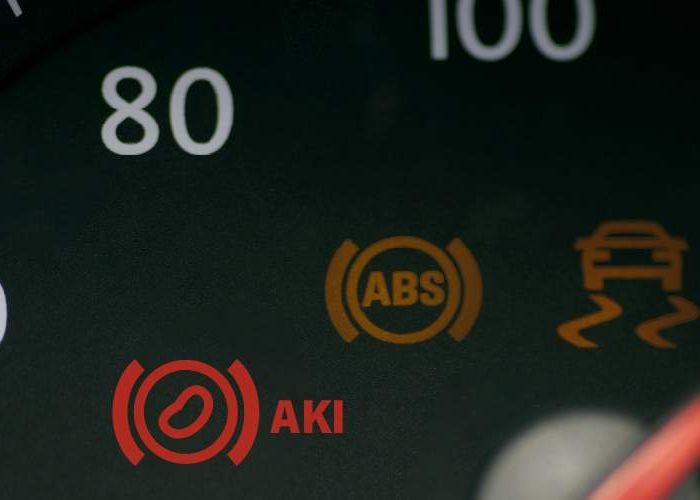

Kidney Injury Case Study: Daisy's Story With Cystatin B
Historically, early diagnosis of acute kidney injury in dogs and cats has been challenging, especially in asymptomatic patients. However, the advent of a novel urine biomarker, cystatin B, can be beneficial in detecting acute kidney injury (AKI) before clinical signs are present in the patient. This case study demonstrates how this diagnostic tool helped detect AKI in a real-life patient.
Daisy's Initial Presentation
Daisy, a 3-year-old spayed Greyhound, initially presented to the veterinary hospital after being struck by a vehicle. A physical exam and initial triage diagnostics included a tFAST and an aFAST (thoracic/abdominal Focused Assessment Sonography for Trauma). These tests identified superficial abrasions, pulmonary contusions, and a pneumothorax, as well as a hemoabdomen secondary to a lacerated spleen.
Additional lab diagnostics were ordered and revealed: mildly elevated glucose and blood urea nitrogen (BUN), elevated alanine aminotransferase (ALT), mildly decreased phosphorus, and slightly low lymphocyte count.
Based on these findings, Daisy was hospitalized for three days, and her known injuries were treated appropriately. As her clinical signs and lab work results improved, she was discharged to her owners with the instructions to restrict her activity and complete the course of oral medications prescribed (carprofen and gabapentin for analgesia, amoxi-clavulanic acid for her abrasions). She was scheduled to recheck in 2-3 days.
Daisy's Recheck
Daisy presented three days later for her recheck. She was bright, alert, and responsive, and her vitals and physical exam were normal. However, her owners reported that she had been quieter than usual at home and, although eating well, seemed to drink more water than usual.
Based on these behaviors, a recheck blood screen and urinalysis were performed. They revealed an improvement in her liver enzymes and an ongoing slight elevation in her BUN. While all other functional biochemistry markers were within normal limits, her urinalysis revealed dilute urine in a quiet sediment but with a cystatin B result of >500 ng/ml.
A cystatin B result greater than or equal to 100 ng/ml indicates active kidney injury may be present. When this finding was discussed with her owners, they elected to hospitalize Daisy for renal monitoring and urine output due to concerns about subclinical kidney injury.
Daisy's Diagnosis and Treatment Plan
Based on the most recent cystatin B result and other diagnostics, Daisy was diagnosed with hospital-acquired acute kidney injury secondary to trauma. Daisy was placed on intravenous maintenance fluid therapy and was to have her functional kidney values with SDMA, electrolytes, and urine output (UOP) monitored every 24 hours. She was also scheduled to have a cystatin B concentration rechecked in 48 hours.
Over the first day of treatment, Daisy's liver values and BUN continued to improve, and her UOP normalized. On day three, Daisy's recheck cystatin B level was < 50 ng/ml, which indicated resolution of her underlying kidney injury. She was discharged, and her owners continued with follow-ups with her regular veterinarian. Without a cystatin B test and the resulting treatment, Daisy would have gone undetected—identifying the injury early may have prevented long-term issues and associated costs.
The Benefits of Cystatin B
The cystatin B test is a urine-based test that provides quantitative next-day results to veterinarians when kidney injury may be present. Increased concentrations of cystatin B in the urine indicate active kidney injury. Cystatin B can help detect acute kidney injury—even in patients where clinical signs are not apparent, or functional markers like creatinine or SDMA remain unchanged.1-3 Cystatin B may also help distinguish stable from progressive chronic kidney disease in dogs diagnosed with early chronic kidney disease.4 Cystatin B testing is indicated in unwell dogs and cats as kidney injury may be present even in cases with non-renal disease. Cystatin B monitoring is recommended in patients diagnosed with CKD as cystatin B may identify progression even in patients with stable, functional markers. With the help of cystatin B testing, pets can get the treatment they need for acute kidney injury, even before more overt clinical signs are recognized.
1 Gordin E et al. Urinary clusterin and cystatin B as biomarkers of tubular injuries in dogs following envenomation by the European adder. Res Vet Sci 2021;134:12-18
2 Harjen HJ et al. Evaluation of Urinary Clusterin and Cystatin B as Biomarkers for Renal Injury in Dogs Envenomated by the European Adder (Vipera berus). Top Companion Anim Med 2022 Jan-Feb;46:100586
3 Starybrat D et al. Progressive evaluation of novel biomarkers of acute kidney injury in dogs following cardiac surgery under cardiopulmonary bypass. J Vet Emerg Crit Care 2022 Nov;(32)6:733-742
4 Segev G et al. Urinary cystatin B distinguishes progressive from stable IRIS Stage 1 chronic kidney disease in dogs. J Vet Intern Med 2023 Nov-Dec;37(6):2251-2260







